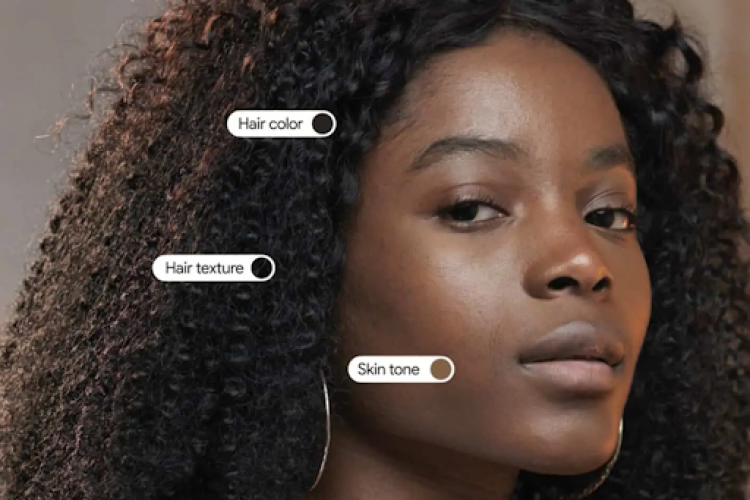A Fashion Standard with Auguste Soesastro
Whiteboard Journal (W) converses with fashion designer Auguste Soesastro (A)









W
You mentioned that you always wanted to be in the fashion world. Have you always wanted to be in fashion or a designer?
A
I always wanted to be a designer. I’ve always liked observing the way people dress and I like what dressing means. I like dressing in terms of context and I can relate to clothing as a medium. It’s one of the starting points but I also like visual arts, paintings, sculptures and it all fuses into one and I studied architecture and that really is a foundation for good designs in general.
W
You studied film in Australia before.
A
I began my studies in architecture so my bachelor degree is in architecture. And then I did a degree in film and animation.
W
Did that influence how you became a designer afterwards?
A
Of course, because I’ve always sort of sketched since I was very young. After studying architecture and film, it changed my perspective on how I sketched and what I knew in terms of designing because as somebody who studied architecture before fashion there is a clear sense of proportion that goes into the clothing, scale and in relation in between the body and the clothes.
W
So it’s a structure that you learn?
A
Structure, proportion and scale. Everything that we learn in architecture and context is an important thing.
Clothing has to be ergonomic. That’s number one, because if it’s not, it is a costume. I think design has to fulfill a certain function not just aesthetic values because I think a lot of designers nowadays, especially the younger generations have completely abandoned the idea of function. It’s all about aesthetics, the “Wow!” factor, the shock value of fashion and I think it has moved away from what fashion really is. I think that’s costume.
W
After you graduated, you went to school in Paris. Did you have to abandon a lot of ways of thinking gathered from when you studied architecture to when you entered into fashion?
A
Actually no. It actually adds on because it is a different discipline but it is of the same mindset. You have to put on the same hat when you think about architecture and fashion. I think it goes for everything like furniture and interiors. It’s all sort of one linear relationship between different disciplines. The thought process is the same, I think.
W
You then did your internship and also moved to New York where you freelanced. When did you feel like you were ready to launch on your own brand?
A
I launched my own brand after a year of freelancing in 2008.
W
What was your approach in creating your own brand?
A
Certainly I wanted to promote my philosophy on fair trade. Eco-sourcing, sustainable fabrics and also Indonesian culture. That was why I made the brand, Kraton.
W
How did your interest begin in Indonesian culture?
A
I worked for the Australian National Gallery at one point. I was the junior curator for Southeast Asian Textiles and Ethnographic Arts. I had to study a lot about Indonesian textiles, cultures, and artifacts. So that gave me a sense of pride.
W
Talking about the collection, the brand that you developed. Did you think that you always had the vision for it to be what it is now or did you develop it along the way?
A
When I think about my clothes now and my clothes then, it has been an evolution but the style has changed a little bit from New York to here. In New York, we did more elaborate things whereas here, we — my team and I — stripped down a lot of things. I used to create things that are very complex in the constructions. I mean we still do that today but the look is much more simplified. I used to be much more literally influenced by Indonesian culture. And now that I’m in Indonesia, it’s not about being influenced in an Indonesian culture but how to create a new Indonesian style.
W
Do you think that the work that you did in Indonesia would translate well if you were to do it in New York?
A
Well, I used to use more Batik then and I use less Batik now. I still have clean lines, which is still the same as what we have today. But this is what we do now, it is much more streamlined and it’s cleaner. I think it is also sort of a counter reaction to what people wear here. All the over the top things. I just developed an allergic reaction to that. I completely went 180 degrees from that.
W
You said in an interview before that people dressed like Christmas trees.
A
Yes. I think if you don’t have much substance, you just pile on shirts onto yourself. That’s my opinion because the people who actually matter don’t do that.
W
Would you say that the people here aren’t as sophisticated?
A
I think they are very stylish here, they are just not sophisticated.
W
And you’re going for something more sophisticated?
A
More intellectual.
W
Intellectual in a sense they know why they’re wearing what they are wearing?
A
I think they have a clear sense of who they are. People who are intellectual have more confidence in their own substance and more comfortable in their own skin.
W
How does the clothing help to express that idea of intellectualism?
A
I think when clothing is well constructed and appearing simple enough, it brings out the woman instead of the dress. When you meet someone, you should be looking at them, not the dress. I think it’s Coco Chanel that said if “it’s a good dress, you’ll remember the woman. If it’s a bad dress, you’ll remember the dress.” It should be about the woman.
W
It should be complimentary to the woman?
A
Yes, it should enhance the woman and not overpower her. I know people who can actually pull off crazy looks and it doesn’t overpower them because they have the personality to carry things like that. But most of the women here don’t. They’re just awkward with their heels. They can’t walk in heels. I think if you can’t walk in heels, you shouldn’t wear heels. You should never force yourself into anything.
W
Talking about your collection, Kromo…
A
Kromo is something I developed two years ago. It’s ready -to-wear. It was a huge jump from couture. Let’s say it doesn’t really belong to today’s world as much anymore, in the economic sense. I think a lot of houses still have couture to maintain the image of the house but I feel if you’re in the fashion business, you’ll know that the only profitable couture house is Chanel. Everything else does not sell. Everything is actually just a loss for it to sell more.
W
So did you develop ready-to-wear for business purposes?
A
Well yes, I needed to sustain the business. And you know Indonesians don’t actually understand the concept of couture. They know custom-made but custom -made and couture is completely different. Yes, “couture” is the French word for sewing but there are also techniques involved in making couture and I think people here don’t understand that. So the margin that I was making was not interesting enough to keep that going. I still have Couture for good clients only but for most people I don’t do custom made anymore.
W
With your ready-to-wear collection, did you want to tap into a larger market?
A
Yes, and it is sort of liberating to make ready-to-wear in a way. It’s not as fussy. It’s the same amount of stress but it’s a different kind of stress. Ready-to-wear and Couture, even though they are both clothes, it’s like making two different things. Like in the automobile industry, it’s like making a Rolls-Royce and Mercedes. They are both luxury cars but one is handmade completely and one is machine made.
W
How did you approach the design for ready-to-wear?
A
Ready-to-wear has to be easily alterable. It has to be easier to construct. Sometimes I put more seams. I think a lot of people have the opposite approach when they do couture. They have more seams. But I actually think it’s the opposite thing because in couture when you make something on someone’s body, you can eliminate all those seams because you’re custom-making something. But I like things as minimal as possible and I think that to create a really pure aesthetic like that is the most difficult. So I reserved that for couture now.
W
You mentioned that fashion needs to have its context. With your ready to wear collection does that mean that you’re unable to design something that lasts for a longer period?
A
I think context means environment. Actually I don’t believe in seasonal ready-to-wear. Yes, you have to make seasons to fulfill the international standard of fashion with new collections every six months. But I have clothes that I have worn for the past ten years. Sometimes certain things on a certain daily basis. I still have those pieces and my dream is to create something like that. Timeless but not mundane. It’s not basic, not sewing 101. It’s something very sophisticated, very timeless, trans-seasonal. It’s not a passing fashion trend.
W
Can you elaborate on the context?
A
Context means where you’re going. I think a lot of designers here create gala gowns. I mean where are you going to go with that in Jakarta? There is no occasion to wear that. The lifestyle here is malls, resorts and going to lunch I guess. So I think the clothes must be appropriate for that and the weather is hot so you shouldn’t make things with polyester. And also this is a country with a huge muslim population so you have to be considerate about that, too.
W
Earlier you mentioned that your clothing is, can I say, eco-friendly?
A
Yes, you know. That’s the dream. I have things that are eco-friendly, especially in the couture.
W
The question is, what is the responsibility of a designer? And how do you apply it?
A
For designers in general? I think you set your own standard.
W
What is your standard?
A
I think you can say to put good clothes that are of good quality. Although I’m doing ready-to-wear collections, I don’t mass produce because I don’t like waste. I think it’s very important to be an advocate of the environment because I think the way we live is not sustainable enough. It’s not going to be sustainable and we can’t keep going to live like this. In that sense I think it’s very important to be environmentally aware of what is happening.
W
Are there any limitations of wanting your clothes to be eco-friendly?
A
Yes, of course. It’s very difficult to sew eco-friendly fabric. Eco-friendly fabric is very expensive. Yes, I have eco-friendly fabric — I have ecological cashmere. That’s very expensive and not everyone can buy it. That’s the point. And I don’t want to be thought as an elitist but you know, it is what it is.
W
Would you think there will be a time where ecological fabric will be affordable? Is it heading that way?
A
What is affordable, though? Zara? You think it’s affordable? It’s very expensive for what it is. I’ve never bought anything from Zara. Maybe a pair of leggings? I actually never bought anything from Zara. I think it’s very expensive for something that is, one, — sorry to say — made in China, mostly synthetic fabric, mass-produced, and you can only wear it six months – most of the things. Because as soon as the trends change, you can’t wear it.
W
How do you make people who are not accustomed with this standard understand your ideals?
A
It’s a slow process but it has a lot to do with education and behavior. I’m not talking about formal education only; I’m talking about education as a whole. Because if you have parents who spend like there’s no tomorrow, of course you can grow up thinking, “consume, consume, consume” without thinking. I think a customer needs to be very discriminating of what they buy. They need to think twice before they buy something. I’m kind of like that. I don’t mind spending a lot on one piece of clothing but I always think, “Am I still going to wear this for the next, at least, five years?” “Is the material good? Is the stitching good? Is the quality good?” Then it’s okay, I’ll buy it. I don’t buy clothes every month, sometimes I don’t buy clothes for two whole months.
W
From your experience, what would you say of Indonesia’s fashion industry?
A
Let’s be frank, in Indonesia there is no fashion industry. An industry means a proper marriage between a real designer house and a manufacturer in a fashion level. We have manufactures in the garment level and we have designers who do tailoring. Those do not make an industry, those are still considered crafts. There’s no real fashion industry. Yes, there is retail fashion but they’re not really fashion. They’re considered garment.
W
So how do we develop it?
A
There’s a lot of attempts to start. There’s one or two designers who are successfully doing it on the level of real fashion, like Biyan. Biyan is in the league of international standard of what is a fashion industry designer in Indonesia.
W
Does it make it difficult, then, to be a fashion designer?
A
It makes it difficult if you have international standards. If you don’t know the international standard then it’s fine. And if you’re not used to international standards, then it’s fine.
W
What are the prospects of being a fashion designer in Indonesia?
A
There’s a chance to create something new here. Also and labor is relatively not as expensive as it is in the US although it’s getting there. But the difference is, when I pay one person to do something there, I need to pay three people here to make up the skill of that one person there. So it’s cheaper but not really, you know. Plus all the headaches that you have here.
Economically speaking, the fashion business here is doing very well. I think standards are improving. But creatively, I’m not so sure. We need to step up our game.











